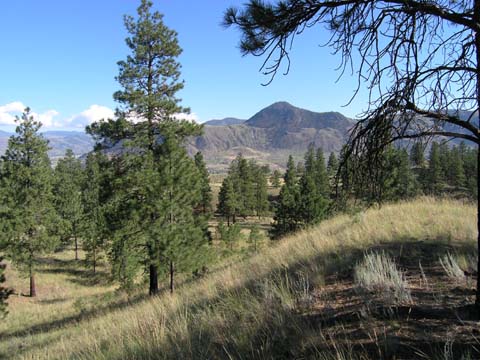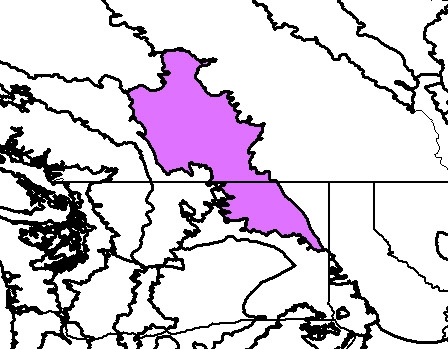
dry Douglas-fir/ponderosa pine forest, South Thompson River Valley, British Columbia (c) 2012 Lyn Baldwin
Bioimages home (click on an image to enlarge)
view
this page in its intended navigation context
Okanogan dry forests
(WWF
ecoregion NA0522)

dry Douglas-fir/ponderosa pine forest, South Thompson River
Valley, British Columbia
(c) 2012 Lyn Baldwin

Source of bioregions data:
Olson, D. M. and
E. Dinerstein. The Global 200: Priority ecoregions for global conservation. (PDF
file) Annals of the Missouri Botanical Garden 89:125-126.
Distinctiveness (1=highest,4=lowest): 4
(nationally important)
This region contains a diverse array of vegetation and includes species of large
mammals that are absent in more densely populated areas.*
Conservation Status (1=most endangered, 5=most
intact): 2 (endangered)
Approximately 20% of habitat is intact. Valleys have mostly been converted
to agriculture or urban development. Upland forest have been logged in the
past or are scheduled for logging in the future. Overgrazing and mining
are threats.*
 Pinus contorta
(lodgepole pine)
Pinus contorta
(lodgepole pine) Populus
tremuloides
(quaking aspen)
Populus
tremuloides
(quaking aspen) Picea glauca
(white spruce)
Picea glauca
(white spruce) Pseudotsuga menziesii
(Douglas fir)
Pseudotsuga menziesii
(Douglas fir) Abies lasiocarpa (subalpine fir)
Abies lasiocarpa (subalpine fir) Pinus ponderosa
(ponderosa pine)
Pinus ponderosa
(ponderosa pine) Artemisia tridentata
(big sagebrush)
Artemisia tridentata
(big sagebrush)Associated habitats
grasslands near treeline, South Thompson River Valley, British Columbia


(left) Grasslands and a lake. (right) Aspens near
treeline .(c) 2012
Lyn Baldwin
hires
hires
* Ricketts, T.H., E. Dinerstein, D.M. Olson, C.J. Loucks, et al. (1999) Terrestrial Ecoregions of North America: A Conservation Assessment. World Wildlife Fund - United States and Canada. Island Press, Washington, D.C. pp. 258-260.
Except as noted, images copyright 2002-2011 Steve Baskauf - Terms of use